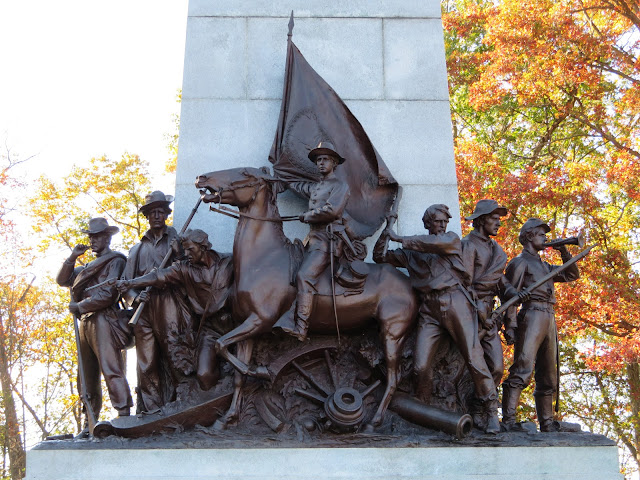One of the first things we did in Washington, DC was to visit the Copyright Office, where we had fun requesting their copy of Steve's book.

|

|
The Copyright Office was established to administer and support the nation's copyright laws, and is the place where copies of registered creative works are stored. It occupies three huge buildings on Capitol Hill. The oldest is the Thomas Jefferson Building, a Beaux-Arts style structure with decorative details reminiscent of historic Rome.
The dominant building on Capitol Hill is, of course, the Capitol.
Like many other Neoclassical buildings here (built at a time when nobody thought about the needs of the disabled and elderly), its entrances are approached by impressive staircases. Because of today's security concerns, these stairways are no longer used by the public. The visitors' entrance is on the other side, at a lower level far from the grand doorways.
Each state can donate two statues of notable citizens to be displayed in the Capitol. Many of these are in the National Statuary Hall, which is accessible to tour groups. Others are distributed throughout the building, including the Visitor Center, the Crypt, and assorted hallways. Most of the statues are of the expected war heroes and politicians, but there are also humanitarians, scientists, and creators.

Thomas Edison, Ohio |

Ethan Allen, Vermont |

Helen Keller, Alabama |

John Gorrie, Florida |

Philo Farnsworth, Utah |

Norman Borlaug, Iowa |
The Statuary Hall was once the meeting place of the House of Representatives. A plaque on the floor marks the location of John Quincy Adams's desk.

|

|
A highlight of the tour is the huge Rotunda, decorated with large historical paintings, frescoes, relief sculptures, statues, and architectural details.
In the eye of the dome, 180 feet above the floor, is the fresco "Apotheosis of Washington" painted by Constantino Brumidi in 1865. Like many Renaissance works seen in European churches and palaces, this painting depicts a revered person in Heaven, surrounded by historical or allegorical figures. Here, George Washington, dressed as a Roman emperor, is attended by figures representing the original thirteen states, as well as Liberty, Fame, War, Science, Marine, Commerce, Mechanics and Agriculture.
This is not the only portrayal of Washington as godlike. Horatio Greenaugh's 1841 "Enthroned Washington," which was modeled after a statue of Zeus, triggered controversy, largely for depicting its subject only partially clothed. It now occupies a place of honor at the National Museum of American History.
Among the many artworks on the Rotunda's curved walls are a sandstone carving by Enrico Causici, depicting Native Americans offering a snack to the Pilgrims, and a John Trumbull painting representing Washington's acceptance of General Burgoyne's surrender.
Across the way from the Capitol is a masterpiece of stairs and columns, the Supreme Court building. We amused ourselves by standing outside and staging a fake disagreement so we could say we had argued before the Supreme Court.
The West Pediment, created by artist Robert I. Aitken, is carved with an allegorical grouping, showing Liberty Enthroned, surrounded by figures representing Order, Authority, Council, and Research. Several of the figures are portraits of people who were influential in the creation of the building, including Aitken. The inscription is "Equal Justice Under Law".
Inside, the two self-supporting, elliptical spiral staircases are made of marble, 136 steps each, rising from the basement to the third floor. (There is a ground floor and then a first floor, so the third might be considered the fourth.)
Even the elevator doors are fancy.
There are many exhibits about the history of the court, the construction of the building, legal education in America, various legal issues, and the individual justices. There are busts or portraits of all the Chief Justices. The bust of John Jay, the first Chief Justice, is draped much like a Roman emperor.
More of the things we saw in the D.C. area will be covered in the next post.
Note: We were here during the first half of November.
We love seeing your comments on the blog. To leave a comment, please click here.




























































